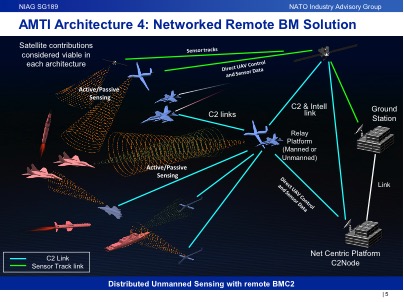Pirates Hit Spanish Fishing Ship With RPG
Somali pirates hit a Spanish fishing boat off the coast of Kenya with a rocket-propelled grenade Thursday as private security on board returned fire at the would-be hijackers.
The successful defense of the fishing vessel Albacan illustrates two trends driving up the stakes for sailors and pirates off the Horn of Africa: Better trained and protected crews are increasingly able to repel attacks, but pirates eager for multimillion-dollar ransoms are now resorting to violence much more often to capture ships.
Two-thirds of attacks by Somali pirates are being repelled by crews alone, without the aid of the coalition warships that patrol the Gulf of Aden, according to an analysis by The Associated Press of attacks reported to the London-based International Maritime Bureau.
Most did so without the use of armed guards, although private security contractors helped repel pirates in at least five incidents off the Somali coast last year.
As it gets harder for pirates to capture ships, the Somali gangs are more likely to fire at sailors with automatic weapons to make ships stop. The bureau says only seven ships were fired on worldwide in 2004 but that 114 ships were fired on last year off the Somali coast alone. That’s up from 39 incidents off Somalia and in the Gulf of Aden in 2008.
Most crews now post extra lookouts, register with maritime authorities and practice anti-piracy drills, said Cyrus Mody of the IMB. Increasing speed and maneuvering so a ship produces more wake or heads into rough waves can also make it more difficult for pirates.
The International Maritime Bureau does not recommend using armed guards due to potential legal problems and fears of starting an arms race with the pirates or increasing the danger to sailors. Moody told AP in October 2008 that armed guards on ships may encourage pirates to use their weapons more – a prediction that appears to have become reality.
None of the 33 crew members or three guards was hurt in Thursday’s incident, the ship owners association Cepesca said in a statement from Spain. None of the pirates was believed to be hurt either. But maritime officials expect more gunfire attacks to happen this spring as calmer seas will likely bring a spike in attacks.
Many ship owners are investing in physical defenses like stringing razor wire and adding fire hoses that can hit attackers with streams of high-pressure water. Some ships are even having electric fence-style systems installed. Secure Marine has installed 45 electric fence-style systems around ships.
It also has new devices that can create a type of waterfall around a ship to flood pirate skiffs that get close. The water can be heated “so the higher the pirates climb, the hotter it gets,” said company chief Raphael Kahn. Skin irritants or dye can also be added that help coalition forces identify attackers for possible arrest, he said. Some ships have been forced to rely on sailors’ ingenuity.
Crews have thrown everything from oil drums to wooden planks at would-be hijackers clambering up ladders.
Last month a crew played the sound of dogs barking over an amplifier to frighten off attackers. Dogs are considered unclean in Islam and few Somalis keep them as pets. Shipping industry officials are discussing putting guard dogs on high-risk vessels to help frighten off pirates, Mody said.
Most hijackings are opportunistic and pirates who encounter resistance often give up and chase an easier target. “If you’re being chased by a lion, you don’t have to be faster than the lion,” said Graeme Gibbon Brooks of Dryad Maritime Intelligence. “You just have to be faster than the person next to you.”
Better training and preparations mean that although 2009 saw 217 Somali pirate attacks – the highest number on record – most were unsuccessful. Forty-seven ships were taken, about the same as in 2008, which saw 111 attacks, according to the International Maritime Bureau. The attacks are becoming more dangerous for crew members, though. More than 20 ships were fired on with rocket-propelled grenades last year, including tankers and chemical tankers. In one incident, two grenades lodged in the door of a ship’s bridge – the area where the captain steers from. Many other ships were damaged by small-arms fire, according to reports from IMB. “In the old days (pirates) just used to show up and wave a rusty rifle. Now people aren’t so easily frightened,” said Gibbon Brooks.
Four sailors died and ten were injured off Somalia in 2009. Two were killed during rescue attempts – one by Yemeni forces and one by the French – and another died in captivity. The fourth was killed by a bullet during the attack. “Pirates are shooting because they want the captain to stop and the crew to keep their heads down,” said Mody. “Crews are not being executed … (but) attacks are becoming more violent, there’s no doubt about that. It’s inevitably going to result in casualties or environmental damage.”
The financial stakes are rising as well, said piracy expert Roger Middleton of the British thinktank Chatham House. Last year, the average ransom was around $2 million, giving the pirates a total haul of around $100 million for 2009. This year, two ransoms paid were around $3 million and $7 million, he said, citing industry officials. “There’s a commercial calculation as well as a humanitarian one,” he said. “It’s cheaper to pay a bit more a bit more quickly than a bit less over a longer period of time, because of associated costs like compensation to the sailors, lost work time, and possibly a loss in the value of the cargo.
Associated Press

